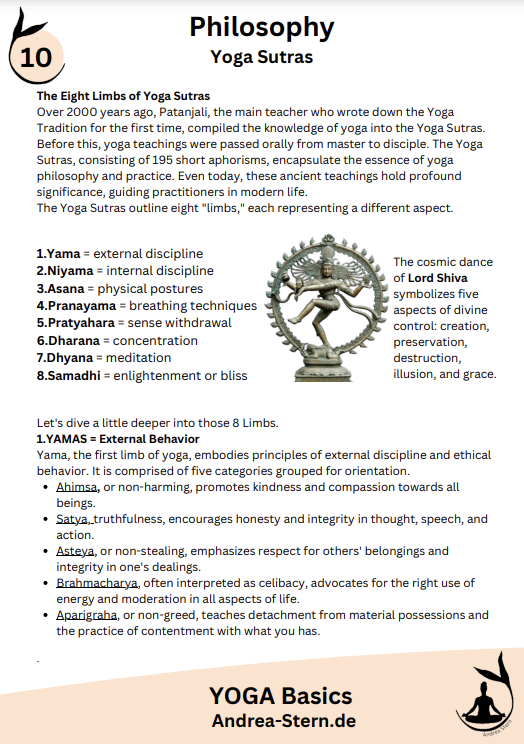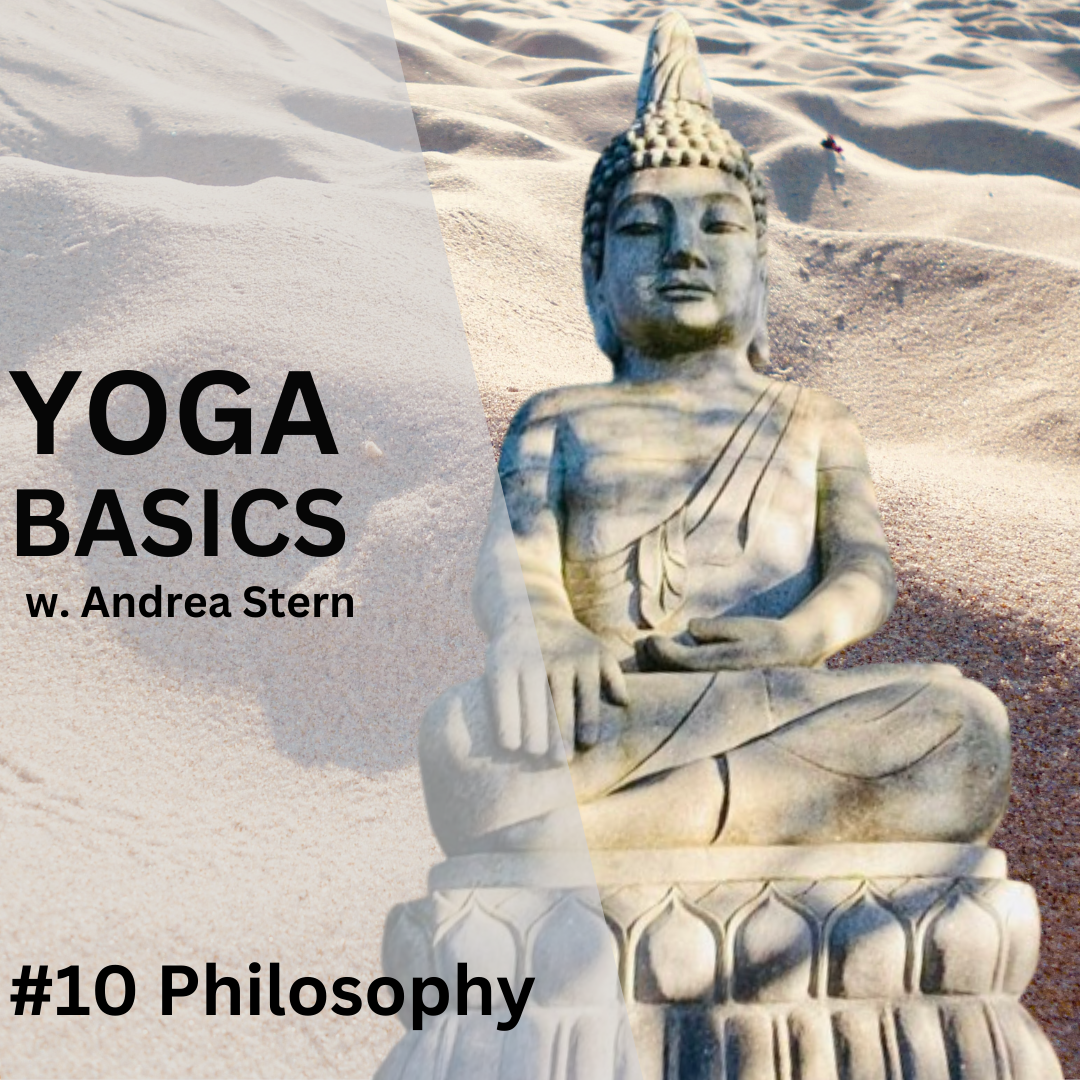After exploring the basic principles of alignment in various asanas and breath work, today, in this 10th lesson, we focus on the Yoga Philosophy, specifically the eight limbs the Yoga Sutras. Patanjali, often regarded as the father of yoga, documented this ancient wisdom in 195 aphorisms. These profound principles are just the tip of the iceberg of Yogic philosophy. Those eight limbs offer a comprehensive roadmap for individuals on their journey towards enlightenment. But know that Yoga is an experience, not a religion.
1.The Yamas consist of five ethical principles that serve as guidelines for our behavior towards others and the world around us.
2.The Niyamas consist of five inner observances that guide us in cultivating self-discipline, self-awareness, and spiritual growth.
3. Asana refers to the physical practice. These postures are designed to strengthen the body, increase flexibility, and improve overall health and well-being. Through the practice of asanas, practitioners develop greater awareness of their bodies and cultivate mindfulness in movement. These asanas are created to prepare the yogi’s body for sitting in meditation.
4.Pranayama, the Breath is the heartbeat of yoga. It synchronizes with every movement, transforming practice into a meditative flow. By honing in on the breath, yogis cultivate mindfulness and unlock the body’s natural intelligence.
5.Pratyahara means withdrawing your senses from the outside world and focusing inward. By tuning out distractions, you can better concentrate and become more aware of your inner self. This practice helps prepare the mind for deeper meditation techniques like Dharana, Dhyana, and Samadhi.
6.Dharana involves the practice of focused concentration on a single point or object. By directing the mind’s attention to a specific point, practitioners develop mental discipline and clarity.
7.Dhyana is the practice of meditation, where the mind becomes still and calm. Through the practice of meditation, practitioners cultivate a heightened state of awareness, inner peace, and connection to the present moment and spiritual awakening.
8.Samadhi is the ultimate goal of yoga, representing a state of profound spiritual realization and union with the divine. In Samadhi, the individual self merges with the universal consciousness, leading to a transcendent experience of bliss, peace, and oneness.
Download Handout here.

